Visual Culture: Media_Fine Art, Photography [Howells, R., Negreiros, J., (2012).]
“Artists learn to draw realistically by not by the careful study of nature… but by the discovery of more and more effective artistic conventions or ‘schemata’, by which the illusion of reality can be more effectively achieved” (162).
“The consequence was that skilled artistic actually relied on a ‘vocabulary of the form’ rather than a ‘knowledge of things’ when creating convincing works of art” (162).
“Perhaps, then, the greatest limitation of Gombrich’s theory of realism in the fine arts remains in its underlying assumption that fine arts are — or at least ought to be — a realistic medium” (171).
Through the class discussions, we have decoded very much different diversities of visual works, to analyze the construction of meanings from beer labels to social media hot feedbacks. Thinking of the meanings people transformed into could fill some sense of desires so that is the truth, the functions, the interactions and things we take out from.
I enjoyed reading the chapter of Fine Art. One of the most interesting points about the reading set is the idea of “the innocent eye”. For me, the painting is a visually cognitive process. According to Helmholtz’s proposal (1867) that the perceptual system executed an “unconscious inference” from proximal sensory stimulations (e.g., retinal stimulations) to perceptual representations. On his approach, he assumed that light came from overhead and the perceived object was convex, or light came from below and the perceived object was concave, which developed “implicit assumptions” concerning the distal environment or the relation between environment and perceiver. The theory was also called “constructivism” even it’s attributed cognition in the perceptual system. I believed that our visual system is always valuable to decode, and then encode forms and shapes to the fine art by innocent stimulation to percepts.
Moreover, the perspective of different artists from different periods have represented the same visual reality in so many different ways intrigued me too. Comparing fine art with brands and advertisement, the visual representations approach in the same way, like coffee (STARBUCKS, McCafe).
As with many people in my age, coffee usually carries some sense of comfort and energy. Although the smell, teste, and overall visual appeal of coffee are so much more enjoyable for me, the negative connotations of drinking coffee everyday for energy or “better day” would be the most ironic connections between coffee and advertisements.
“A good illustration is given by perceptual adaptation.” Nico Orlandi stated that a suitable manipulation can change the visual system’s priors. In an amount of paintings about the coffee topic, bright color and vibrant shapes advance the process of people’s cognition from reality to other’s experiences; in fact, when the photography comes along, the representation of the reality was manipulated into a perceptual myth on the combination of comfortable and popular. I think that fine art favors a more realistic attitude towards photography as if fashion without literally claiming.
Visual Essay:
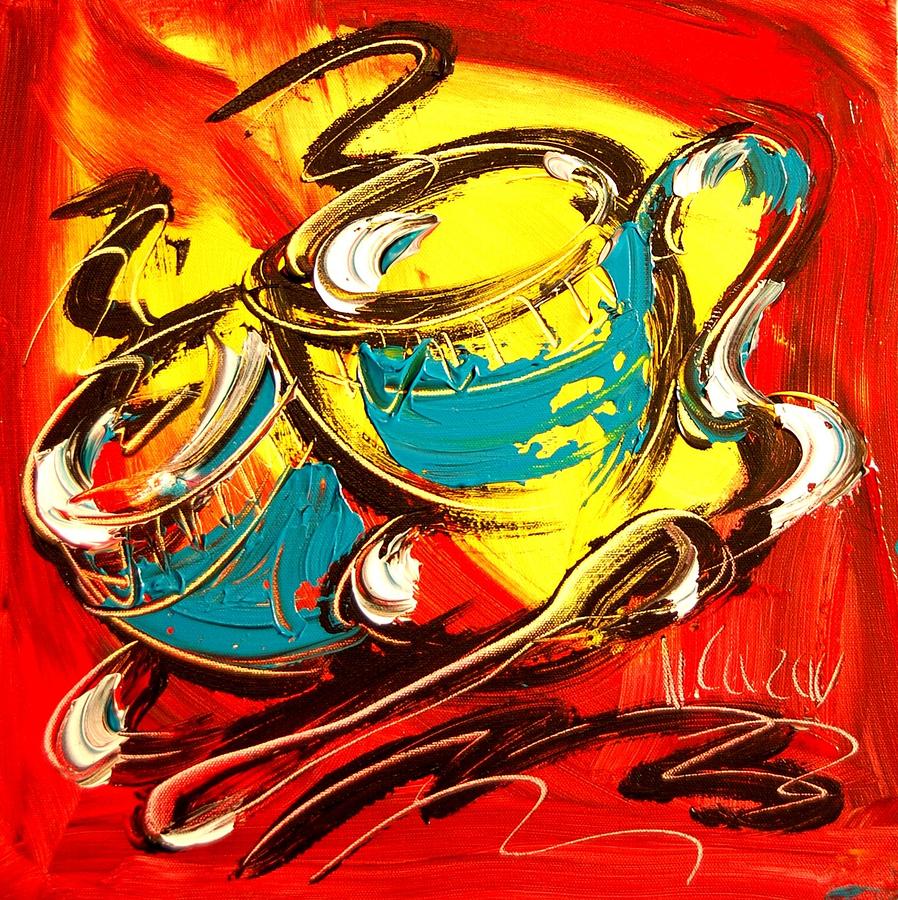
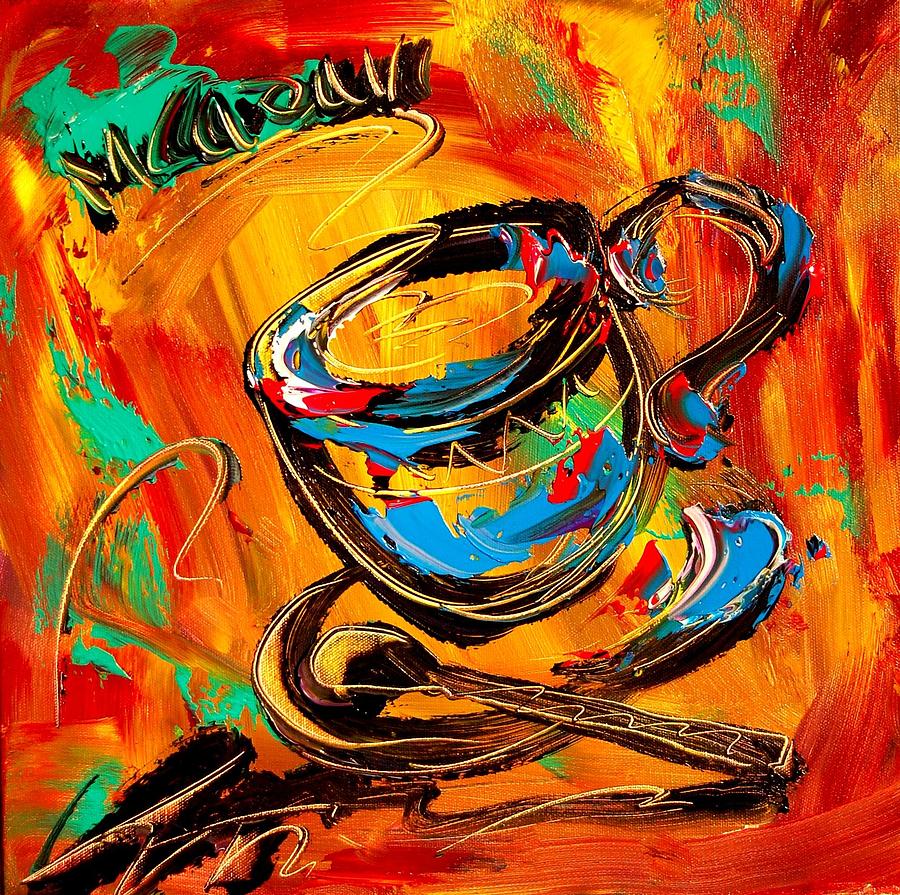
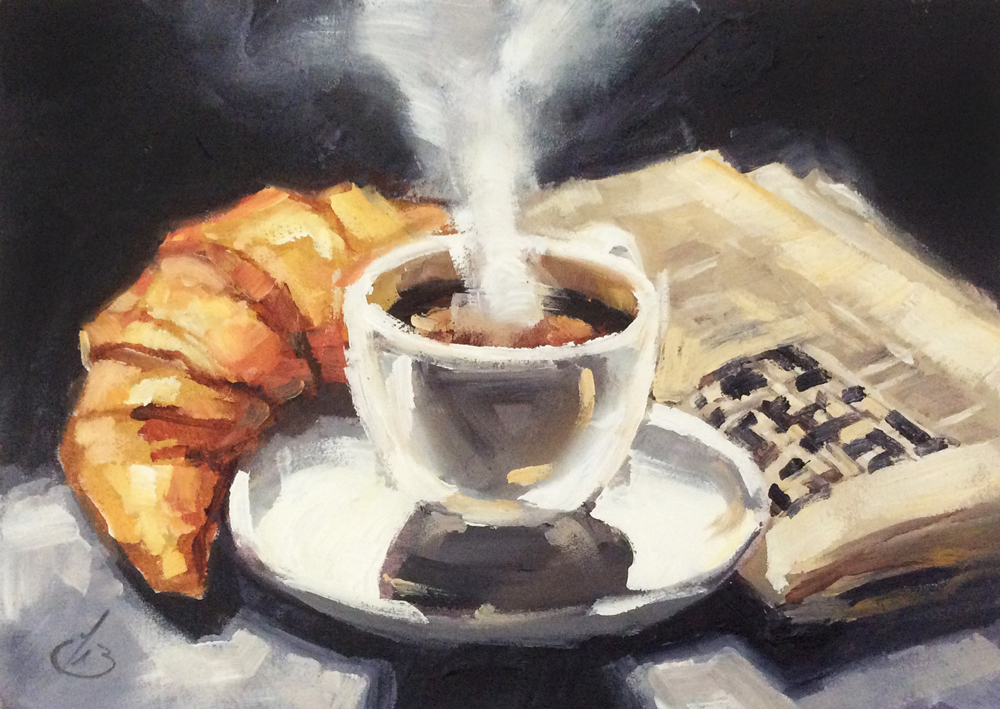
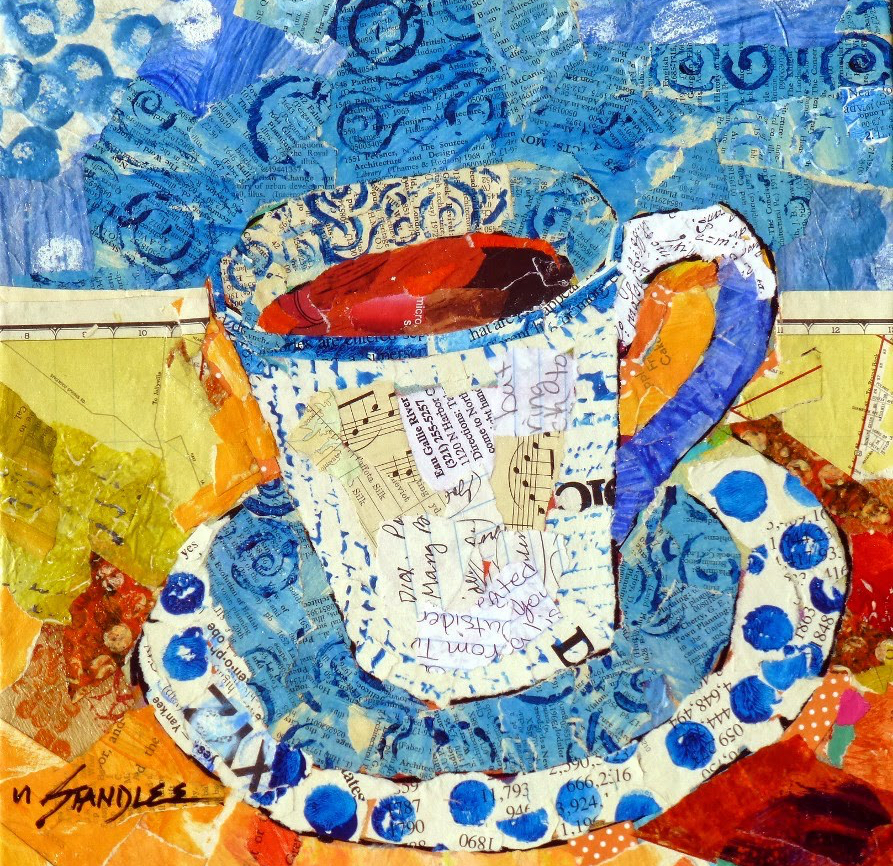
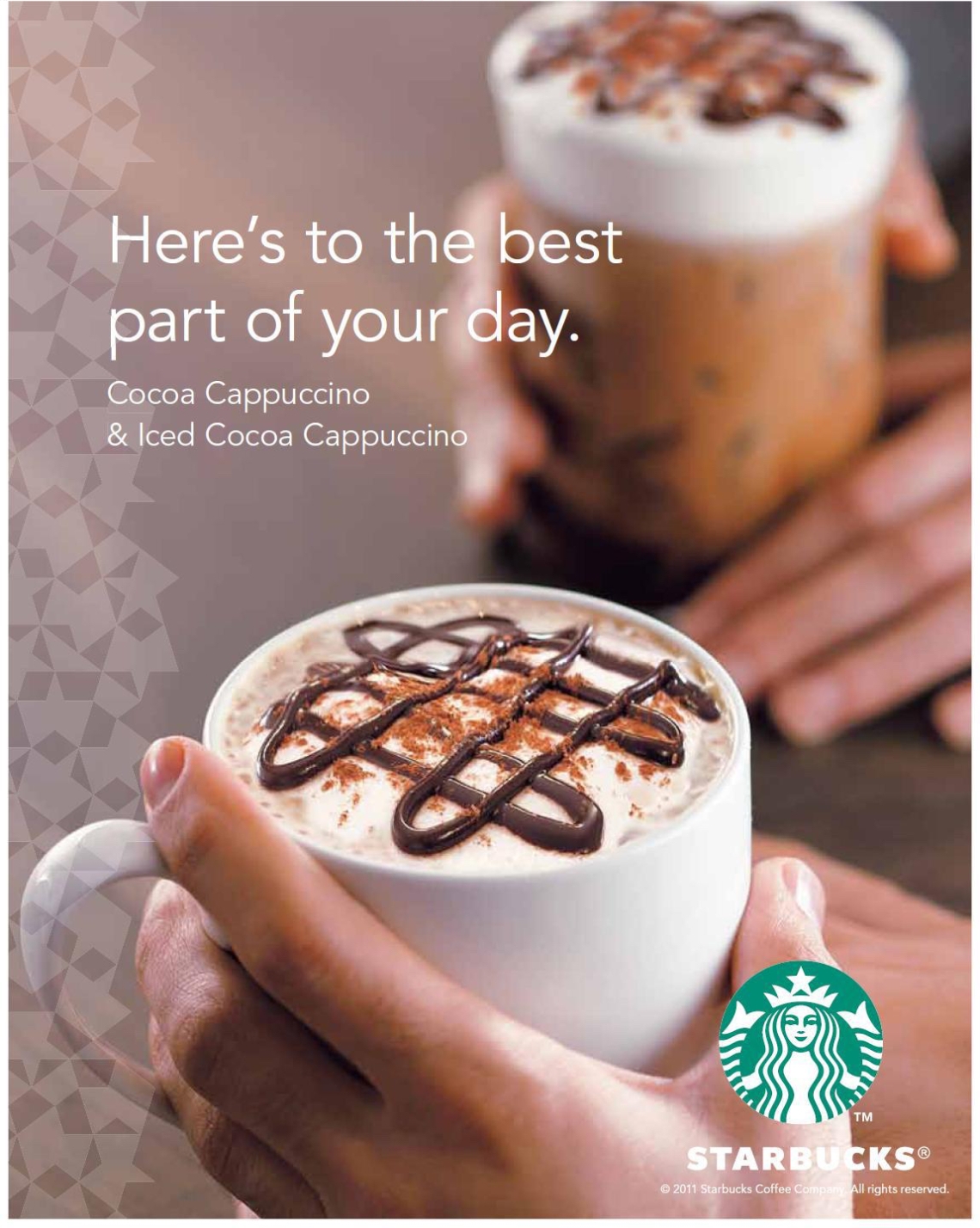
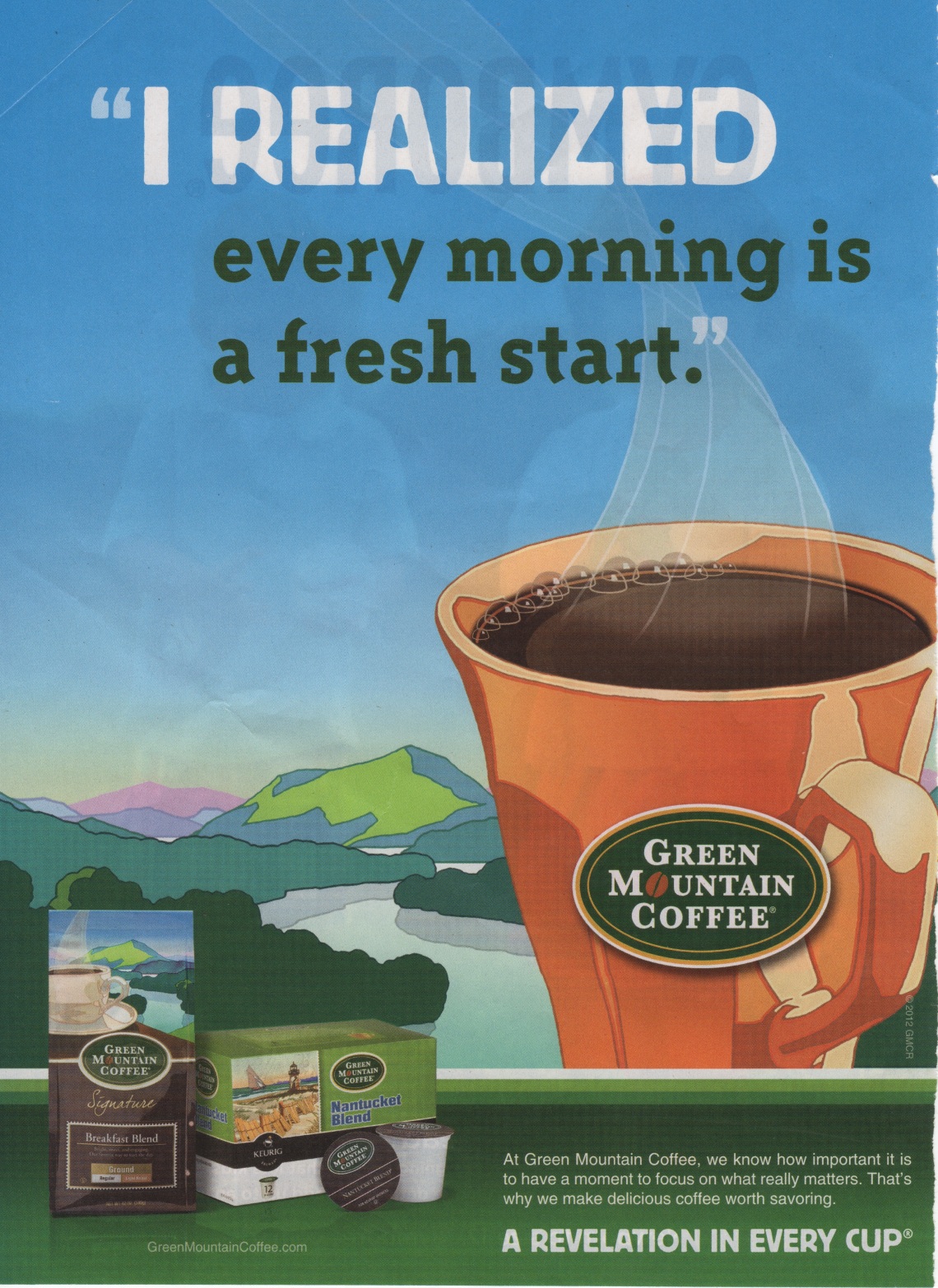
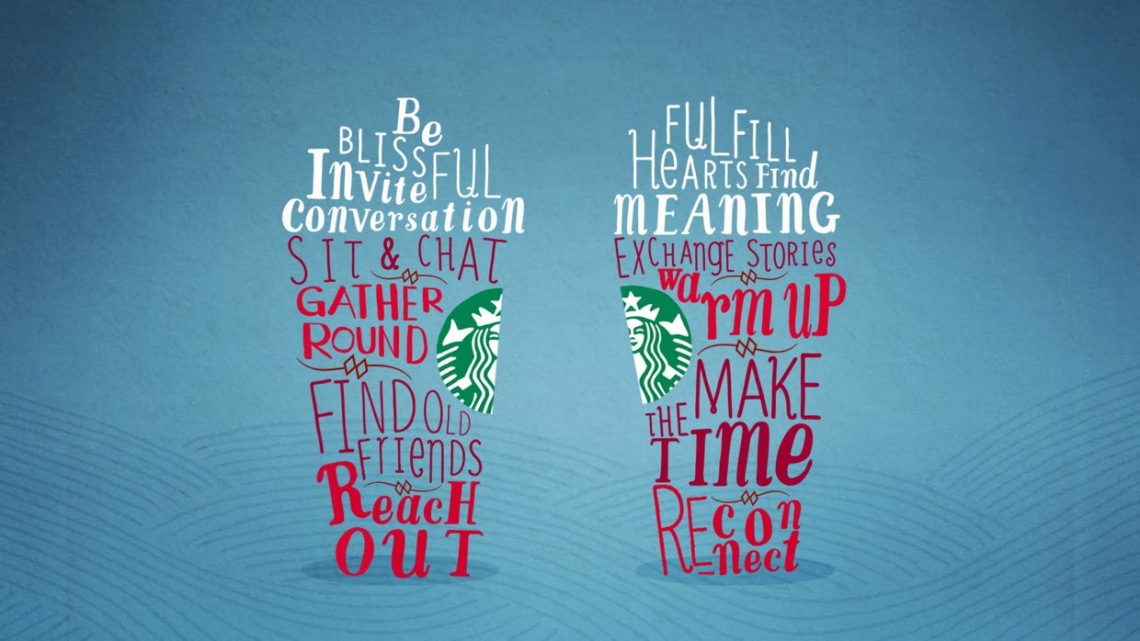
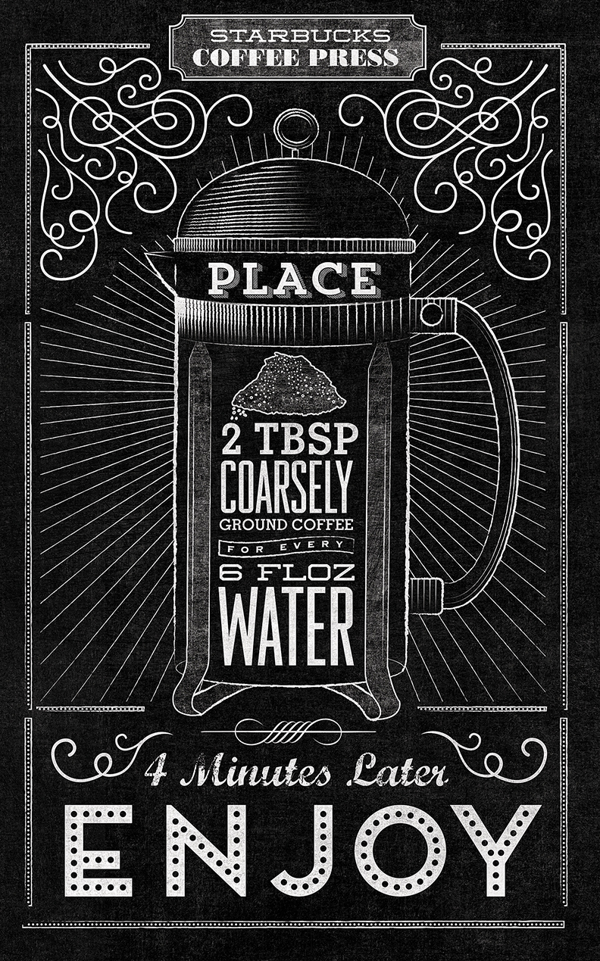
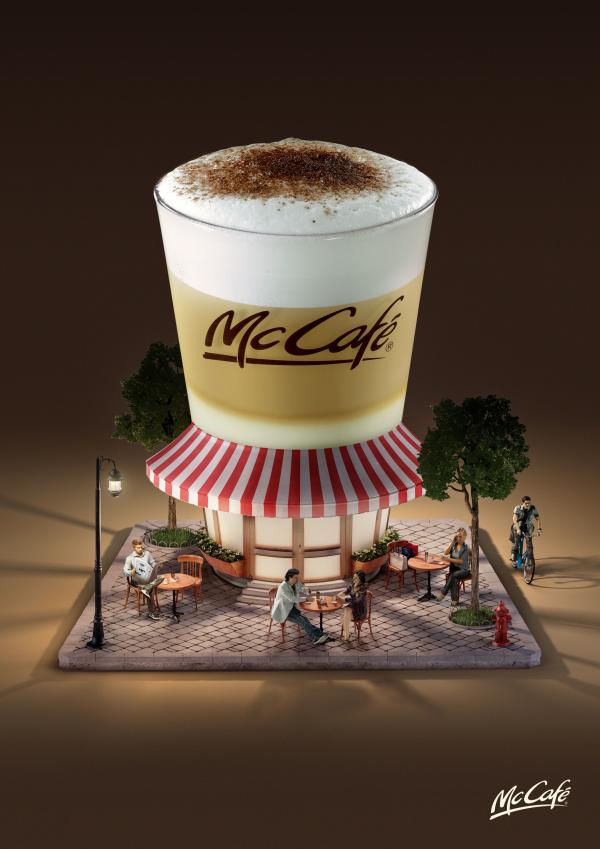
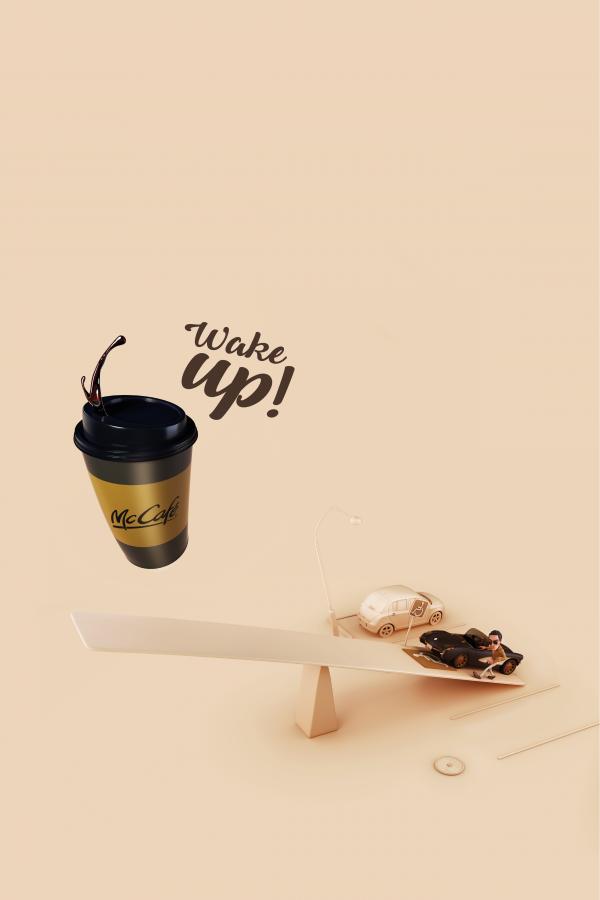
Cited Credits:
1-2.Coffee 2011, Mark Kazav, [https://fineartamerica.com/profiles/mark-kazav.html]
3.COFFEE, CROSSWORD, CROISSANT, Tom Brown, [http://tombrownfineart.blogspot.com/2016/09/coffee-crossword-croissant-by-tom-brown.html]
4.Coffee A Cup With Torn Paper, Nancy Standlee, [http://www.nancystandlee.com]
5. Starbucks ads, [http://unit31photography.blogspot.com/2013/03/photoshoot-planning.html]
6.Green Mountain Coffee, February 2012 [Green Mountain Coffee]
7-8. Starbucks ads, [starbucks.com]
9-10. McCafe, [https://www.coloribus.com]
